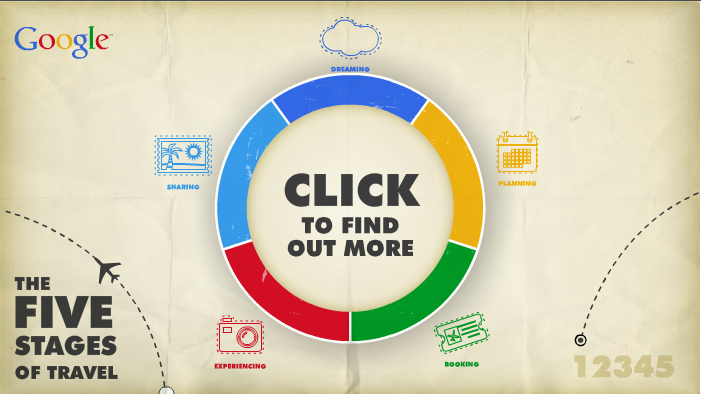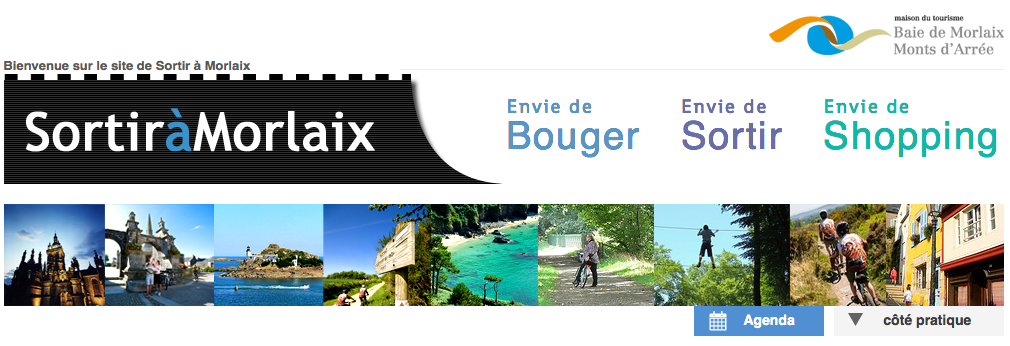In the travel marketing industry, when we refer to the traveler’s decision-making decision process, we traditionally refer to three phases: Before, During and After.
Before a trip takes place, one will refer to different offline and online tools, such as destination web sites, online travel agencies (OTAs), user-generated content sites and various social networks in order to gather information about a potential upcoming trip, book accommodation and transportation, then get ready to travel.
After the trip, a traveler will typically upload pictures to their Picasa, Flickr or Facebook accounts, will review the hotel, restaurant or attraction on Yelp or TripAdvisor and may continue the conversation with one or many of the brands (hotel, destination, airlines, etc.) depending on the type of customer experience delivered and overall vacation satisfaction.
The concept of “Digital Destination” corresponds to the During phase of the travel cycle. It encompasses all digital components a traveler will come across once on site, at a given destination.
(With these five stages of travel, dreaming, planning and booking take place before, experiencing takes place during, and the sharing takes place after)
An Evolving Model
A recent research undertaken by the Bournemouth University eTourismLab in collaboration with the Australian Tourism Data Warehouse (ATDW) shows that only a fraction of the available technologies are used comprehensively for promoting destinations online and the vast majority of destinations do not exploit technological capabilities fully.
With the advent of social media and mobile comes the contraction of the three phases into a single one: that is, everything is now in real-time! The lines between before, during and after are blurring and we all need to adapt to this new reality
Becoming a Digital Destination thus requires a different mindset and toolkit than what we are accustomed to typically when looking at pre- and post- aspects of travel.
Rather, it’s about how new technologies can enhance the traveler experience while onsite: greater access to information, integration of tools between accommodations and visitors’ bureau, lighter versions of web sites adapted for mobile and tablets, and more importantly, pertinent information accessible in real-time.
Because herein lies the real revolution and challenge: with the advent of social media and mobile comes the contraction of the three phases into a single one: that is, everything is now in real-time! The lines between before, during and after are blurring and we all need to adapt to this new reality.
THE SIX KEY COMPONENTS OF A DIGITAL DESTINATION
Becoming a digital destination is not just about developing a mobile application – although this is certainly an aspect of the equation! In fact, according the French consulting agency Touristic, there are six key elements that are the foundation on which a digital destination strategy ought to be built:
1. Wifi
Free wifi is not just nice-to-have, it’s a must-have! Thus, ensuring bandwith and accessibility across the destination becomes a key aspect to ensuring a seamless customer experience, from transportation to attractions to accommodations to restaurants.
2. Mobile solutions (site, application)
With the ever-increasing user growth of smartphones and tablets, what solutions should be developed to ensure connected travelers can continue their search while onsite? A mobile optimized site and/or a mobile app are the tools of choice that should be in place.
3. Digital desk
How can destinations use new technologies to enhance the traveler experience? Whether it’s through smart use of QR codes leading to an offer, exclusive behind-the-scene video or a mobile site, or whether it’s using touchscreens in key areas of the destination to extend regular visiting hours at the local information desk, technologies can address the needs and wants of the travelers while keeping operational costs in control. (See below example of Manchester Visitor Information Centre)
4. Modified website
Would it be thinkable to have a modified website for when you are onsite at a destination? A “lighter” version, if you will? This variation of the full-on site would only feature highlights and most commonly asked Q&A. Or perhaps a modified site that focuses more on different types of personas, as per different identified popular niches, i.e. foodies, culture buffs, party animals, etc.
5. Printed documents
Going digital is nice and the way of the future, but this doesn’t mean we can’t hold the traveler’s hand during this process. You develop a new mobile application for this amazing new walking trail, loaded with videos, location-based gaming features and QR codes to boot? Great!
Make sure people can rent or borrow a smartphone or iPad to enjoy it too, and make sure there is a paper flyer that explains how it works. Better yet, complement the trail with physical signage for those who don’t wish to be bothered with technology.
6. Key performance indicators (KPI)
Last but not least, just like with any marketing endeavor, the above five points need to be measured against success metrics that should be defined from the outset. Without KPIs in place, it will be difficult, if not impossible, to tweak and adjust as time goes by, technologies and customer behaviors changing along the way.
Many barriers remain before this vision comes to fruition. Among others: managing customer databases between the destination and members, and even between the destination website and once at the Visitor Centre. And there will be an increasing need to train and coach destination staff to adapt to these technologies, not to mention a shift in how some destination management organizations will be running their business in 3-5 years from now.
The question is not whether or not we need to adapt, but rather how quickly destinations will jump onboard this moving train…












Leave a Reply